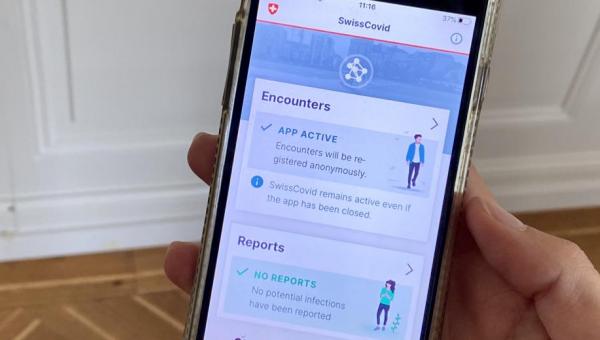Less waiting at traffic lights

Traffic lights can take forever to change. The ETH spin-off Lumisera is developing a solution that guarantees a significantly improved traffic flow thanks to intelligent traffic lights.
Traffic signals preprogrammed with traffic volume calculations based on the time of day have been the standard in urban traffic management for a good 30 years. These systems are not perfect, however. At rush hour, traffic signals usually work differently than at night. And when buses approach, the signal usually changes instantly, which is great for public transport users but can be annoying for pedestrians and drivers.
Self-regulating traffic lights
The problem is that signal control is often static, using predefined models based on historical data. It does not respond to actual levels of congestion on a given day. To prevent the frequent jams, the founders of ETH Spin-off Lumisera have developed intelligent traffic lights.
At a self-regulated intersection, it is the traffic lights that decide which lane turns green and for how long. Detectors record how many vehicles are approaching the intersection from which directions. Once a second, a patented optimisation process recalculates the green intervals for each lane to ensure that the fewest vehicles, cyclists and pedestrians have to stop and wait.
The system allows prioritisation of individual road users regardless of the time of day, as the traffic volume is continuously analysed. And if something unexpected such as an accident happens, the control system adjusts automatically. In other words, whereas current systems are preprogrammed, this one reacts to the actual situation on the roads.
A dynamic overview of the traffic situation
The control system determines the traffic light intervals using various data. Pedestrians press the button at the traffic lights as before. Buses automatically feed data into the system and cameras and induction loops built into the asphalt provide data on the remaining traffic. All this comes together to create a dynamic overview of the traffic situation, which the software uses to control the lights.
25% less waiting time in Lucerne
A pilot project put the system to the test in the city of Lucerne in January 2020. Every day, 18,000 vehicles and around 700 buses pass through the test location, along with considerable pedestrian and bicycle traffic. People often experience traffic jams or long waits, especially at peak times. The pilot was accompanied by an impact study conducted by the Institute for Traffic Planning and Transport Systems at ETH Zurich, which showed very encouraging results. All road users had to wait significantly less at the traffic lights, and congestion practically disappeared. The average wait for car drivers was 25% shorter, and for pedestrians up to 35% shorter.
With cars likely to become even more connected and autonomous, the future is promising for systems like these. A continuous supply of up-to-the-minute data will make intelligent traffic light systems even more precise in future.




